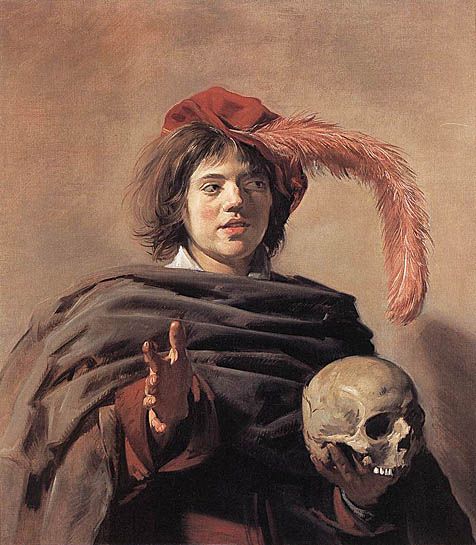The Beauty of Elevated Horror- by Josh Henson
In the last three decades, horror media has both developed and stagnated at an uneven rate. There have been excellent explorations of the genre, deconstructions of its most unbelievable elements, reconstructions that return them to form, and plenty of overacted, poorly written filler to make money at the box offices. As I have grown and developed a love for horror, I have gone back and endured plenty of these movies, both good and bad. However, very few of these movies have stuck with me or inspired my own creative energy in either stories or nightmares.
As both a writer and a lover of good scares, I struggled to label this discrepancy with any sort of definitive conclusion. I must immediately concede that I loathe jumpscares or sudden spooks, which hinders a lot of modern horror films from contention. However, even subtle and slow paced films were mixed on their effectiveness.
Over the summer of 2019, I travelled to a horror convention in Williamsburg, VA, known as “Scares That Care.” On top of meeting a few of my literary idols, I attended a variety of discussions and panels on the past, present, and future of horror. During one of these conversations, a question was asked about the search for the next Stephen King-esque writer. Visibly irritated, a response was given by Paul G. Tremblay, himself an author of merit and one I would recommend. Tremblay expressed a belief that King’s popularity and style of horror was ebbing away. In its place came what he loosely dubbed “elevated horror.”
Although Tremblay did not provide a specific definition, he provided examples of films within this subgenre: works such as Jordan Peele’s Us and Get Out, Ari Aster’s Hereditary, or Robert Eggers’ The Witch. Upon doing some research myself, I found references to this style of horror among various publications. However, it was approached with a litany of tones, some excited, and some sardonically unpleasant. Like many terms of its type, elevated horror connotes either a new streak of creativity within a dying genre or a further corruption of its intent.
Elevated horror is essentially the application of horror as allegory in various forms. This can be easily described in many of these films: Get Out proves an unsubtle allegory for the nature of racism and cultural appropriation. Hereditary is a deconstructive interpretation of the permanent ties that never falter in families. I could inadvertently spoil dozens of movies in this way. Nonetheless, they provide messages that intend to resonate with the viewer long after the credits roll.
This may be conducive to a more apt term. Elevated horror does not seem to place a focus on scaring the viewer, although this may still occur. Elevated horror is more centered around disturbing the viewer with questions of human nature and sanity obscured by monsters and demons. The work is not as scary as it is tense and unsettling. The true horror within Hereditary, for example, does not lie within the demonic plot and possessions. It instead lies in the quiet scenes where we watch the family at the center crumble under the very real burdens of guilt and grief.
It is my opinion that this is the exact intention of horror media. From its inception, horror carried a message or existed as a precautionary tale. Vampires, for example, were devised as a critique of pale aristocracy who preyed upon peasants for the sake of hoarding wealth. Old children’s tales, such as that of Hansel and Gretel, were devised with unsavory fates and threats in order to deliver a lesson to children. Fear and terror were exploited in order to convey a message or perception to an audience. Additionally, horror has changed as societies have. The anti-scientific message of Frankenstein, for example, became the racially-charged tension of Night of the Living Dead.
George Romero’s 1969 classic Night of the Living Dead served as the zeitgeist for popular horror. However, beyond its then-controversial levels of gore and the macabre, the film’s choice of casting added a layer of racial consciousness to the horror. By casting an actor of color to play Ben, the protagonist of the film, only to have him meet his end at the hands of white survivors rather than the undead, the audience was made to consider the evil of racism over the threat of fictional zombies. The message was likely more effective in that it was obfuscated by fantasy. Those who are unlikely to be receptive to an overt message may be more persuaded by allegory.
By including an otherworldly aspect to a plot, the audience is placed at the same level of comprehension regardless of their experiences. The imbalance of real-world experiences, such as hatred, privilege, or injustice take a secondary role to the universally alien threats that drive the plot. Thus, some people are able to immediately peer beyond the veil, but others are not intimidated by the intent of the film and merely enjoy it for the horror aspects. Rather than overtly providing a message, elevated horror plants a seed of thought that allows the viewer to slowly draw their own conclusions. Essentially, elevated horror is that which respects the social and cultural consciousness of its viewers.
Thus, elevated horror is not a perversion of the medium. If anything, it is a return to the original intent of many horror works. The most terrifying stories told are those that we can imagine ourselves in, and the reality of disease, hatred, and violence are often much more immediate than the threat of fictional beasts. In using subtlety and allegorical elements, the true horrors that terrify us all are realized in a way that is much more palatable.
I must concede, however, that what we now call elevated horror is not only just returning after nearly four decades of stagnation. In other forms of media, such as novels and video games, horror that possesses these qualities has thrived. The 2001 video game Silent Hill 2 is such a nuanced and detailed piece of art that I could dedicate a whole piece to it. For the sake of brevity, I will merely state that every aspect of the game, from the atmosphere to the monsters is deeply symbolic, and questions are constantly raised about the nature of sanity and redemption. Other mainstream games such as The Last of Us and Bioshock have continued this trend to modernity. Authors such as Thomas Ligotti and even Stephen King himself have utilized allegory and subtlety to provoke the empathy of readers.
Elevated horror is merely a return to form for the horror genre brought on by legitimate societal change and conflict. While there is a place for campy, popcorn flicks within the genre, the resurgence of intelligent and meaningful horror has returned it to mainstream appeal. This is not a coincidence. As media has become more complacent with the status quo and dedicated to appealing to the lowest common denominator, consumers are still hungry for meaningful and introspective content. Horror has become a lens to view our flawed world as it is, and as it could be. The best horror media does not immediately scare its audience; it cultivates terror days and weeks after it is consumed.




